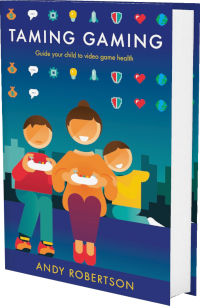 Android
Android iOS
iOS Mac
Mac Switch
Switch Wii
Wii Wii U
Wii U PC
PC PS4
PS4 PS5
PS5 Xbox One
Xbox One Xbox X|S
Xbox X|SWe've documented 25 accessibility features for Tunic, including Fully Voiced (Or No Speech), Guaranteed Progress, Custom Difficulty, Play Without Hearing and Colour Blind Friendly. Its accessibility is strongest in Controls and Visual but it also has features in Reading, Getting Started, Navigation, Difficulty and Audio to reduce unintended barriers.
This report is created with input from accessibility experts and the player community to help people find games that have the accessibility features they require. Once you have found potential games on the database, there are excellent specialist accessibility sites that offer in-depth reviews to guide your purchasing decisions.
External examiner, Andrew Shouldice, first checked Tunic accessibility 2 years ago. It was re-examined by Ben Kendall and updated a year ago.
 Accessibility Notes
Accessibility Notes
The game saves as you go. If you quit at any point you won't lose progress (enemies stay dead, treasure collected), although may be at a previous geographic location. If you die enemies will reappear and you start at the previous door (checkpoint).
There is a map in the game but you have to find it as you discover the pages of the game manual. This also helps you read about monsters and provides tips and tricks about the game.
You can use a mouse for extra buttons but not to control movement. You can't remap gamepad buttons in the game. In combat, there's an option to lock on to enemies with a button press that eases aiming requirement. This targeting can be achieved by a toggle or hold. There are a few other things that require a hold (like raising a shield) that don't have a toggle option.
The controller vibration is driven by low-frequency sounds in the game, like if you get hit or there's an explosion or footsteps of an enemy. Spatial audio offers a good directional indication of where visual events are in the game. When enemies are off-screen you can hear them and be aware of their direction.
While you can save at any time by exiting to the menu, when you come back you go to the last checkpoint you passed through.
 Game Details
Game Details
Release Date: 16/03/2022, updated in 2023
Out Now: Mac, PC, PS4, PS5, Switch, Xbox One and Xbox X|S
Skill Rating: 10+ year-olds
Players: 1
Genres: Action, Adventure (Brain Game, Fighting, Puzzle, Role-Play and Simulation)
Accessibility: 25 features
Components: 3D Third-Person and Hand-Made
Developer: Finji Co (@FinjiCo)
Costs: Purchase cost
 Controls
Controls
We've documented 7 accessibility features for Controls in Tunic which deal with how you control the game, different options for alternative inputs and whether you can remap these settings to suit your needs.
Gamepad
Can play with the following:
Multiple Buttons & Single Stick: Can play with multiple buttons and a stick.
Multiple Buttons & Two Sticks: Can play with multiple buttons and two sticks.
Mouse And Keyboard
Can play with the following:
Keyboard Alone: Can play with just the keyboard.
Remap Controls
Can customise the controls for the game as follows:
Remap Mouse and Keyboard: Can remap mouse and keyboard key bindings, on systems that support these controls.
Remap Extra Mouse Buttons: Can remap additional buttons on mice that provide more than the two standard buttons, on systems that support these controls.
Controller Vibration
Vibration Optional: Controller vibration not used in the game or you can disable it.
Informative Vibration: Controller vibration indicates events or interactions in the game, echoing visual and audio cues. This can provide additional information about progress, approaching enemies or hitting a target.
Similar Games With More Accessibility Features for Controls
If you want to play Tunic, but it doesn't offer the Controls accessibility features you require, these similar games extend the Controls accessibility:
- Paper Animal RPG (10 Controls Features)
- Greak: Memories of Azur (10 Controls Features)
- Figment (9 Controls Features)
- New Super Lucky's Tale (9 Controls Features)
 Difficulty
Difficulty
We've documented 2 accessibility features for Difficulty in Tunic which deal with how you can adjust the challenge of play, and whether this is locked once chosen or can be adjusted as you play.
Difficulty Options
Customise Difficulty: Customise different aspects of the game to create a challenge of an appropriate level. Adjusting elements individually enables you to tailor gameplay to suit your needs and style of play.
Adjust After Setting
Adjustable Anytime: You can adjust the difficulty while playing, without having to restart the level you are on. This enables you to quickly adjust the game to suit your needs and see the difference immediately.
 Getting Started
Getting Started
We've documented 3 accessibility features for Getting Started in Tunic which deal with what support is offered to get started with the game. This includes customising the experience when you first open the game via any onboarding processes it provides as well as tutorials and other assistance when you first start playing.
Assistance Getting Starting
These features aid your play of the game in terms of cognitive load on learning controls, dealing with pressure and coping with the environment and challenges.
No Jump Scares: No sudden loud noises or popping-up scary visuals that unexpectedly appear without warning, or the option to disable them.
Assistance For Progressing
These features aid your progress through the game offering different ways of maintaining your progression.
Guaranteed Progress With God Mode: There is no fail state for any game level, where you lose progress or have to start again. Or there are options to make failing impossible: infinite health or lives, unlimited time. Sometimes called God Mode or Unfailable.
Bank Progress With Frequent Checkpoints: If you fail you can retry that level or aspect of the game without losing a lot of progress (less than 5 minutes). This is often provided via Frequent Checkpoints combined with restarting without losing time, equipment or score.
Similar Games With More Accessibility Features for Getting Started
If you want to play Tunic, but it doesn't offer the Getting Started accessibility features you require, these similar games extend the Getting Started accessibility:
- Lonesome Village (6 Getting Started Features)
- The Legend of Zelda: Tears of the Kingdom (6 Getting Started Features)
- A Short Hike (6 Getting Started Features)
- Minishoot Adventures (5 Getting Started Features)
 Reading
Reading
We've documented 4 accessibility features for Reading in Tunic which deal with how much reading or listening comprehension is required, how well the game provides visual and audible access to the text and whether subtitles and captions are a good fit for purpose.
Reading Level
How much reading is required to play the game's main path or story and how complex the language is. The presence of voiced characters doesn't reduce this requirement, as it's recorded as a separate datapoint.
Simple Minimal Reading: Minimal reading is required. The quantity and complexity of reading are at a level that a primary/elementary student (9-year-old) could understand.
Text Visibility
High Contrast Text: Text colour contrasts to the background or can be adjusted to be. The text in menus, instructions and other information is presented in high contrast with a solid background.
Subtitles
All Speech Subtitled (Or No Speech In Game): All spoken content has subtitles, or there is no speech in the game. This means there is no requirement to hear spoken dialogue or narrative to play the game.
Voice Acted
All Dialogue is Voice Acted (Or No Speech In Game): All of the game dialogue and narrative can be voiced, or there is no speech in the game. This means there is no requirement to read the dialogue and narrative text to play the game.
Similar Games With More Accessibility Features for Reading
If you want to play Tunic, but it doesn't offer the Reading accessibility features you require, these similar games extend the Reading accessibility:
- New Super Lucky's Tale (7 Reading Features)
- Greak: Memories of Azur (6 Reading Features)
- The Legend of Zelda: A Link Between Worlds (6 Reading Features)
- Yoshi's Crafted World (6 Reading Features)
 Navigation
Navigation
We've documented 3 accessibility features for Navigation in Tunic which deal with how the game provides guidance and assistance to navigate its worlds. These are only for games that have traversal and exploration in 2D and 3D spaces.
Menu Navigation
Menu Audio Cues: Navigating menus provide an audio cue for each selection.
Digital Menu Navigation: Menu choices with Gamepad can be made without using an analogue stick to guide a cursor to a selection. For example, using D-Pad, buttons or the Stick to change menu selection in a single action.
Menus Don't Wrap: Menus don't wrap and stop the cursor at the bottom of the list if you press down. Or menus do wrap but make it clear that you are back at the top of the list with sound or narration.
Similar Games With More Accessibility Features for Navigation
If you want to play Tunic, but it doesn't offer the Navigation accessibility features you require, these similar games extend the Navigation accessibility:
- The Legend of Zelda: Tears of the Kingdom (7 Navigation Features)
- The Legend of Zelda: Breath of The Wild (7 Navigation Features)
- Paper Animal RPG (6 Navigation Features)
- Greak: Memories of Azur (6 Navigation Features)
 Visual
Visual
We've documented 5 accessibility features for Visual in Tunic which deal with how you can adjust the visuals to suit your needs, and offer additional information if you can't hear the game.
Visual Distractions
No Screen Shake: No screen shake effect or it is included but it can be disabled. This includes the absence of screen shake for dramatic effect as well as to indicate hits on a target.
Audio Cues for Visual Events
Audio Cues for Visual Events: Audio is provided to indicate visual events. Game events or progress highlighted by visual icons, effects or animations are also accompanied by audio to signify that progress. This is useful for blind players.
Audio Depiction of Event Location: Indication with positional/stereo audio of where directional events are on the screen for things like damage, footsteps, environmental elements. This is useful for blind players.
Menu Audio Cues: Navigating menus provide an audio cue for each selection.
Colour Options
Colour Blind Friendly: Game doesn’t rely on colour or can switch to colour blind friendly mode with double coding or similar way to avoid colour dependance.
Similar Games With More Accessibility Features for Visual
If you want to play Tunic, but it doesn't offer the Visual accessibility features you require, these similar games extend the Visual accessibility:
- Minishoot Adventures (6 Visual Features)
- Death's Door (6 Visual Features)
 Audio
Audio
We've documented 2 accessibility features for Audio in Tunic which deal with how you can adjust the audio of the game and whether audio cues compensate for aspects of the game that are hard to see.
Adjustable Audio
Balance Audio Levels: Set music and game sound effects separately. This enables you to select your preference as well as ensure critical game sounds aren't obscured by other audio.
Play Without Hearing
Play Without Hearing: No audio cues are necessary to play the game well.
System Accessibility Settings
In addition to the accessibility features provided in the game, you can also use system-wide accessibility settings:
Nintendo Switch
Nintendo Switch has some built-in features, including a lockable zoom, that can be used on all games.
PC
Windows has extensive accessibility features. Some, like colour correction, work with games. Lots of accessibility software can be used with PC games, from voice recognition to input device emulators.
PlayStation 4
PlayStation 4 has a range of accessibility settings. Some are system only, some work in games (invert colours and button mapping).
PlayStation 5
PlayStation 5 has a range of system-wide accessibility settings.
Xbox One
Xbox One has a system features, the excellent co-pilot share controls mode and adaptive controller support for all games.
Xbox Series X|S
Xbox One has a system features, the excellent co-pilot share controls mode and adaptive controller support for all games.
Read more about system accessibility settings.
Accessibility Report supported by VSC Rating Board, PlayabilityInitiative and accessibility contributors @dicey, Andy Robertson and Ben Kendall












